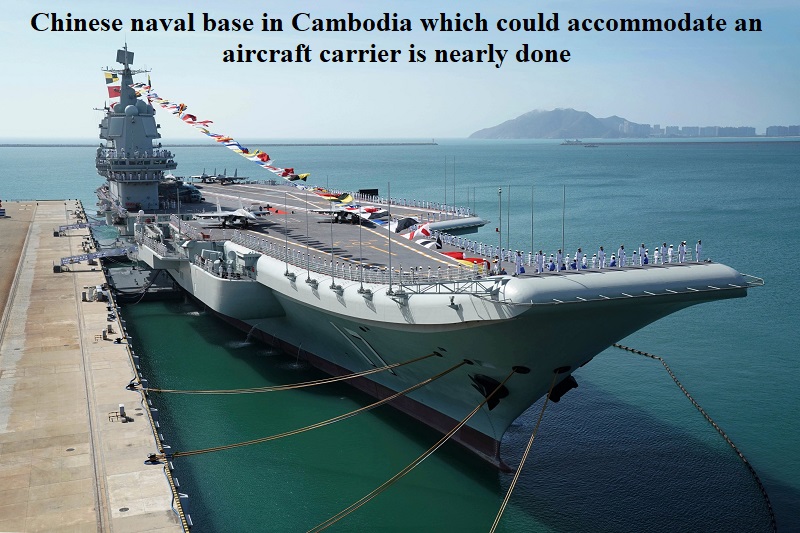
Satellite images from BlackSky reveal that a Chinese naval base in Cambodia, capable of accommodating an aircraft carrier, is nearly completed. The images, captured between August 2021 and July 2023, show significant infrastructure development at the Ream Naval Base, which is operated by the Royal Cambodian Navy in Sihanoukville, Cambodia, along the Gulf of Thailand coast.
The construction progress at Ream Naval Base includes a nearly finished pier that bears resemblance to the one utilized by the Chinese military in Djibouti, their only overseas outpost. The Pentagon asserts that China has been working on this facility to enhance its ability to project naval power. However, both China and Cambodia have denied that the People’s Liberation Army will have access to the base.
A former US intelligence official mentioned that there has been internal debate within the US government about China’s intentions with the base and why it would be preferable over having a base in the South China Sea or Hainan Island.
Craig Singleton, the China Program deputy director and senior fellow at the Foundation for Defense of Democracies, noted the rapid development at the Ream base, indicating China’s deliberate push for overseas basing initiatives. He highlighted that Cambodia’s willingness to host China’s second overseas naval port strengthens Beijing’s strategic ability to project military power into the Indian Ocean.
Singleton pointed out the remarkable similarity between the deep-water pier on the western shore of the Ream base and a military pier at the PLA support base in Djibouti. Both main piers are 363 meters long, capable of supporting any ship in China’s naval arsenal, including the new 300-meter-long Type 003 Fujian aircraft carrier.
Third-party analysts have also observed the construction of a 38,000-square-meter artificial peninsula on the base’s southern shore, as well as various distinct Cambodian and Chinese military structures, including a headquarters facility, barracks, and fuel storage areas. These developments raise concerns about China’s expanding overseas naval presence and its potential impact on regional dynamics.

Post Your Comments